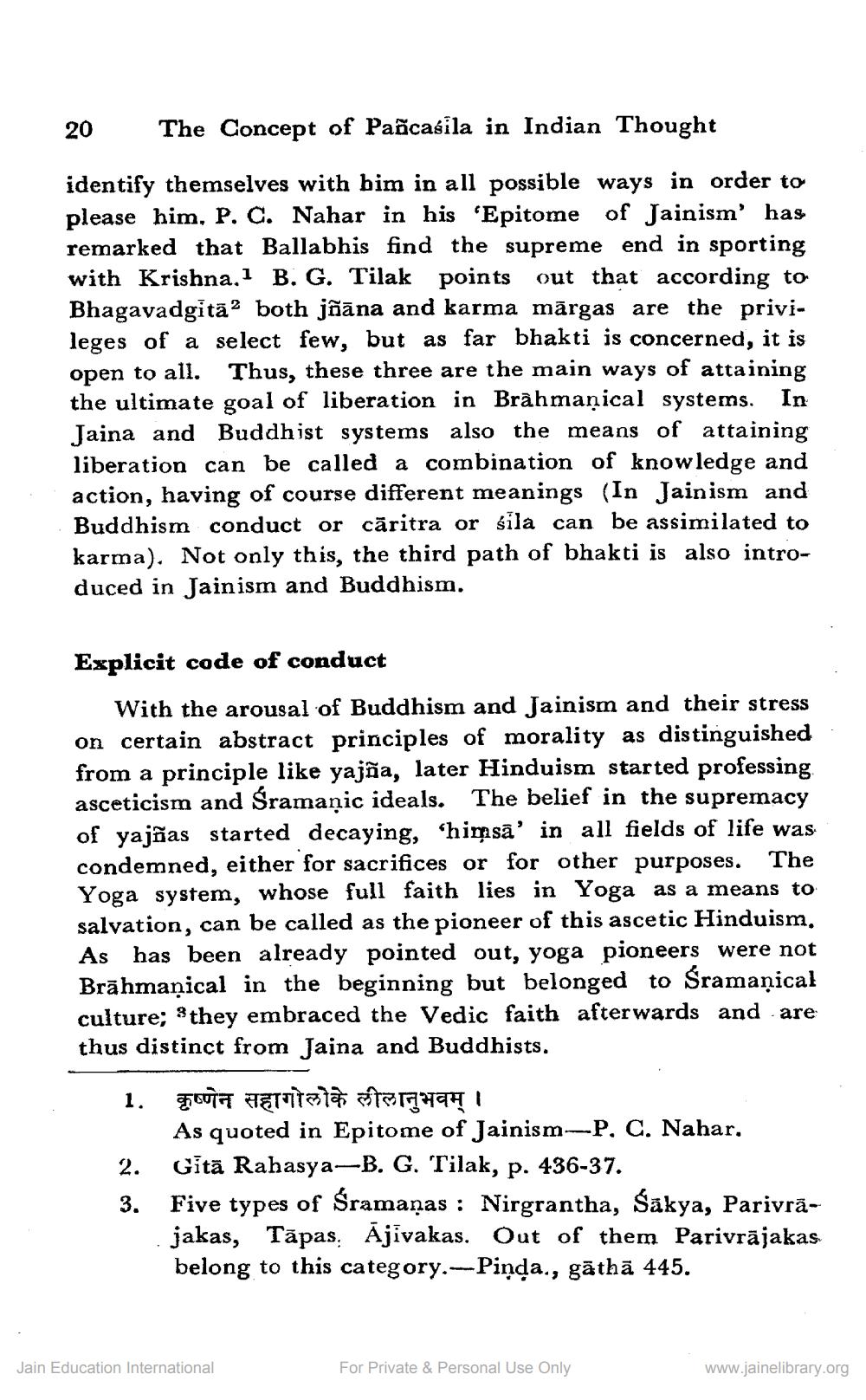________________
20
The Concept of Pancasila in Indian Thought
identify themselves with bim in all possible ways in order to please him, P. C. Nahar in his 'Epitome of Jainism' has remarked that Ballabhis find the supreme end in sporting with Krishna,1 B. G. Tilak points out that according to Bhagavadgitā? both jñāna and karma mārgas are the privileges of a select few, but as far bhakti is concerned, it is open to all. Thus, these three are the main ways of attaining the ultimate goal of liberation in Brāhmaṇical systems. In Jaina and Buddhist systems also the means of attaining liberation can be called a combination of knowledge and action, having of course different meanings (In Jainism and Buddhism conduct or cāritra or sila can be assimilated to karma). Not only this, the third path of bhakti is also introduced in Jainism and Buddhism.
Explicit code of conduct
With the arousal of Buddhism and Jainism and their stress on certain abstract principles of morality as distinguished from a principle like yajña, later Hinduism started professing asceticism and Śramanic ideals. The belief in the supremacy of yajñas started decaying, "himsā' in all fields of life was condemned, either for sacrifices or for other purposes. The Yoga system, whose full faith lies in Yoga as a means to salvation, can be called as the pioneer of this ascetic Hinduism. As has been already pointed out, yoga pioneers were not Brāhmaṇical in the beginning but belonged to śramaņical culture; they embraced the Vedic faith afterwards and are thus distinct from Jaina and Buddhists.
1. cutat yataq otaq!
As quoted in Epitome of Jainism-P. C. Nahar. 2. Gita Rahasya-B. G. Tilak, p. 436-37. 3. Five types of Śramanas : Nirgrantha, Śākya, Parivrā
jakas, Tāpas. Ājivakas. Out of them Parivrājakas belong to this category.---Pinda., gāthā 445.
Jain Education International
For Private & Personal Use Only
www.jainelibrary.org




